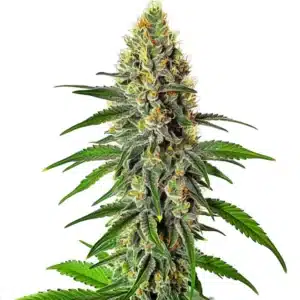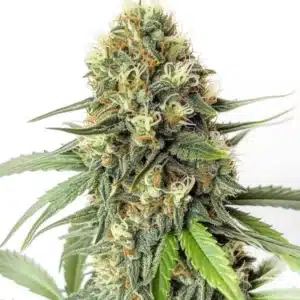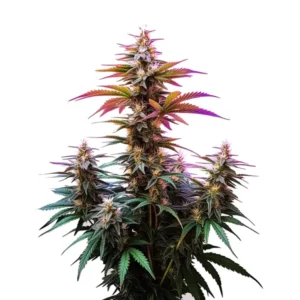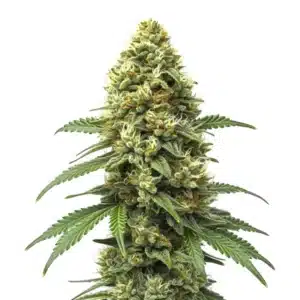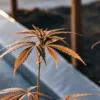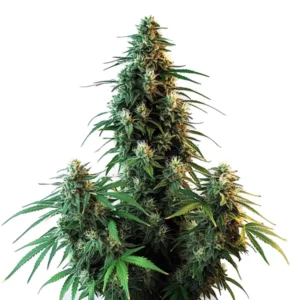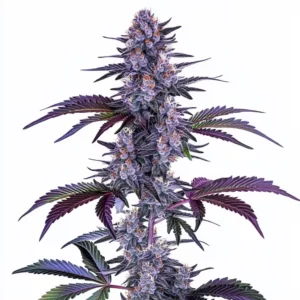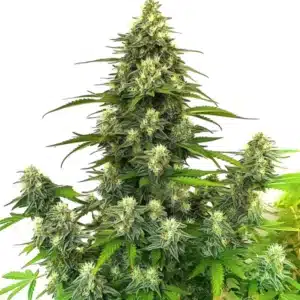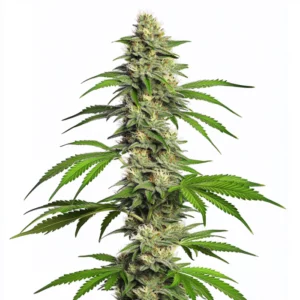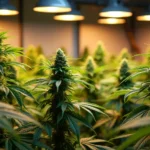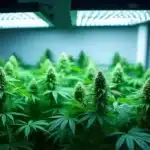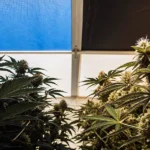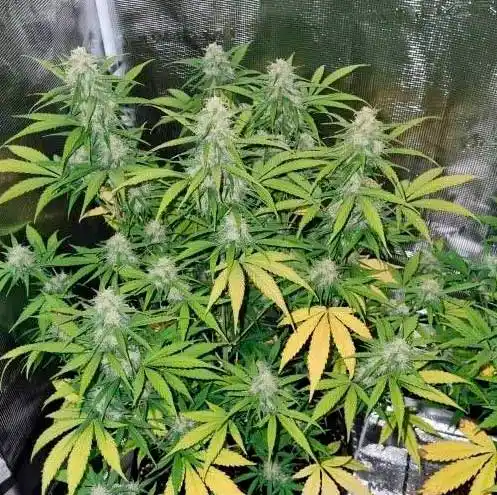
Autoflower Light Cycle
Autoflowering cannabis strains are a game-changer for both novice and experienced growers. With the right light cycle, you can harness their full potential to produce bountiful harvests. We’ll explore the best light cycles for autoflowers, offering insights that will help you optimize your grow operation.
When cultivating autoflowering cannabis, light plays a vital part in the process. Unlike photoperiod strains, which depend on changes in light exposure to begin flowering, autoflowers are genetically programmed to flower based on age. However, the light cycle still greatly affects the health, yield, and potency of your plants. Some growers even experiment with autoflower 12/12 from seed schedules when growing alongside photoperiod plants, although this can limit their full potential.
Recommended Strains
Cherry AK
-
THC: 15% - 25%
-
Type of seed: Feminized
-
Phenotype: 70% Sativa / 30% Indica
-
Flavor: Cherry, Sweet
-
Day to flower: 8 - 10 weeks
Cherry Ak Auto
-
THC: 15% - 22%
-
Type of seed: Autoflowering
-
Phenotype: 50% Sativa / 50% Indica
-
Flavor: Earthy, Fruity, Spicy, Sweet
-
Life cycle of: 8 - 10 weeks
The Significance of Light in Autoflower Growth
Autoflowering strains have Ruderalis genetics, which naturally evolved in regions with short summers and long days. This genetic trait allows them to flower automatically without needing a change in the autoflower light cycle. However, maximizing their potential requires knowing how different light schedules can affect their growth.
Autoflower Light is the driving force behind photosynthesis, the process that allows plants to convert light into energy. The amount and quality of light your autoflowers receive will directly impact their growth rate, bud development, and overall yield.
Popular Autoflower Strains from Blimburn Seeds
- AK 47 Autoflower: Known for its high THC content and relaxing effects, this strain is perfect for those seeking a balanced, indica-dominant hybrid.
- Apple Fritter Autoflower: This strain boasts a potent high and is loved for its creative and euphoric effects.
- Blackberry Moonrocks Autoflower: A high THC strain with a unique blend of berry and blueberry flavors, ideal for those looking for a focused and relaxing experience.
- Blueberry Autoflower: This strain is a favorite for its sweet berry flavors and relaxing effects.
Promos & Deals
What Light Cycle for Autoflower
Choosing the right light cycle is key to unlocking the full potential of your autoflowering plants. While autoflowers do not need a specific light cycle to flower, the amount of light they receive can significantly impact their development.
24/0 Light Cycle: Continuous Growth
A 24/0 light cycle, where the lights are on continuously, is one approach to maximizing growth. This cycle ensures that your plants are constantly photosynthesizing, leading to rapid growth and potentially larger yields.
- Pros: Faster growth due to continuous photosynthesis; no need for timers.
- Cons: Potential for plant stress; higher electricity costs.
Many growers have had success with the 24/0 light cycle, particularly in cooler climates where heat buildup from constant lighting is less of a concern. However, there is ongoing debate about whether plants benefit from a period of darkness, even if it is not necessary for flowering.
18/6 Light Cycle: A Balanced Approach
The 18/6 light cycle, which provides 18 hours of light followed by 6 hours of darkness, is perhaps the most popular choice among autoflower growers. This cycle mimics the natural light conditions during summer, giving plants a rest period that can help reduce stress and promote overall health.
- Pros: Balanced growth; reduced stress with a rest period; more energy-efficient.
- Cons: Slightly slower growth compared to 24/0.
This light cycle is ideal for most autoflowering strains, providing a good balance between growth rate and plant health. The 6-hour dark period allows the plant to rest and carry out essential metabolic processes that might be hindered under continuous light.
Strain Highlights
- Cherry Pie Autoflower: Known for its sweet berry and earthy flavors, this strain offers potent effects and is ideal for reducing stress and muscle spasms.
- Critical Autoflower: A fast-flowering strain with a robust growth profile, making it perfect for those using the 18/6 cycle.
Do You Change Light Cycle for Autoflower

One of the advantages of autoflowering strains is their simplicity—there’s no need to change the light cycle to initiate flowering. However, there are scenarios where adjusting the light cycle can be beneficial.
Keeping it Consistent
Consistency is often the best approach when growing autoflowers. Maintaining a steady light cycle throughout the plant’s life cycle can lead to optimal results, as it minimizes stress and allows the plant to focus its energy on growth and bud production.
Situations that Might Require Adjustment
- Heat Management: If you’re growing in a hot environment, you might consider reducing the light period during the hottest parts of the day to prevent heat stress.
- Electricity Costs: Running lights continuously can be expensive. Some growers opt for a 20/4 or 18/6 cycle to save on energy costs while still providing enough light for growth.
- Plant Health: If your plants are showing signs of stress under continuous light, adjusting to a schedule with a dark period might help them recover.
Strain Highlights
- Gorilla Glue Auto: A well-known strain for its heavy yields and high resin production, perfect for those seeking a potent indica-dominant hybrid.
- Amnesia Haze Auto: This sativa-dominant strain thrives under longer light periods, offering a strong cerebral high.
Can You Change the Light Cycle on Autoflowers
While autoflowers are less sensitive to light cycle changes than photoperiod strains, it’s still important to approach adjustments with caution.
The Impact of Changing Light Cycles
Autoflowers can generally tolerate minor changes in their light cycle without significant negative effects. However, drastic changes can still cause stress, which might impact growth and yield. For example, shifting from a 24/0 to an 18/6 cycle is usually well-tolerated, but frequent changes should be avoided.
When Change is Necessary
In certain situations, adjusting the light cycle can be beneficial:
- Environmental Adjustments: If your grow space is experiencing temperature fluctuations, adjusting the light cycle can help maintain a stable environment.
- Energy Savings: Gradually reducing the light hours as the plant matures can help save on electricity without sacrificing too much in terms of yield.
Strain Highlights
- Girl Scout Cookies Auto: This strain is famous for its sweet, earthy flavors and powerful effects, making it a versatile choice for different light cycles.
- White Widow Auto: A resilient strain that performs well under various light schedules, known for its ease of growth and balanced effects.
Autoflower 24 Hour Light
Running your lights 24 hours a day can seem like an attractive option, especially if you’re aiming for maximum growth in a short period. However, this method has its pros and cons.
Benefits of 24-Hour Light
- Rapid Growth: With no dark period, your plants are continuously photosynthesizing, leading to faster growth.
- Simple Setup: Eliminates the need for timers and light schedules.
However, continuous light can also lead to plant stress, particularly if the strain is not well-suited for it. Some growers report that beyond a certain point, the benefits of 24-hour light diminish, with no significant increase in yield compared to an 18/6 cycle.
Strain Highlights
- Northern Lights Auto: A classic strain that performs exceptionally well under continuous light, offering robust growth and high potency.
- Lemon Haze Auto: This sativa-dominant strain with a citrusy aroma thrives with longer light periods, providing a potent and uplifting effect.
What About a 18/6 Light Cycle?
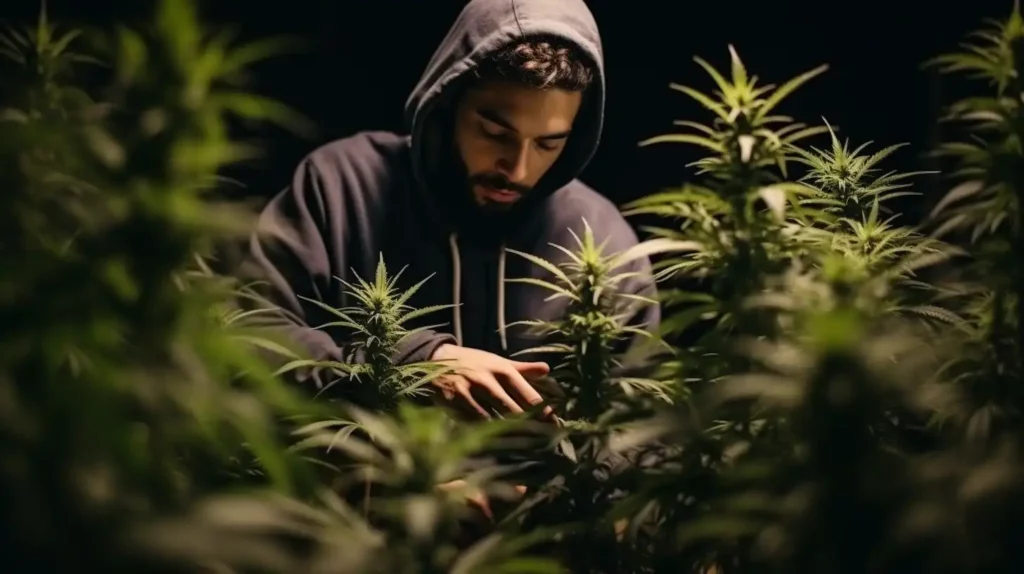
The 18/6 light cycle is the gold standard for many autoflower growers, offering a balance between growth and energy efficiency.
Why 18/6 is Popular
- Mimics Natural Conditions: Provides a natural day-night cycle that many plants are adapted to, promoting healthier growth.
- Reduced Stress: The dark period allows plants to carry out essential processes that may be hindered under continuous light.
- Cost-Effective: Less energy consumption compared to a 24/0 cycle, making it more economical.
This light cycle is ideal for growers who want to ensure their plants are healthy and stress-free, while still maximizing growth and yields. The 6-hour rest period gives the plants time to recover, which can lead to stronger, more resilient plants.
Optimizing the 18/6 Light Cycle
To get the most out of an 18/6 light cycle:
- Light Intensity: Ensure your grow lights are powerful enough to maximize photosynthesis during the light period.
- Timing: Schedule the dark period during the hottest part of the day to help manage temperature and reduce the risk of heat stress.
Strain Highlights
- Blue Dream Auto: A popular strain with balanced effects and high yields, thriving under the 18/6 light cycle.
- Jack Herer Auto: Known for its energetic and uplifting effects, this strain performs well under a consistent 18/6 schedule.
12/12 Light Cycle for Autoflower
While the 12/12 light cycle is typically used to induce flowering in photoperiod strains, there are scenarios where this schedule might be used for autoflowers.
When to Use a 12/12 Light Cycle for Autoflowers
- Mixed Gardens: If you’re growing autoflowers alongside photoperiod plants, a 12/12 light cycle may be necessary to trigger flowering in the photoperiod strains. Autoflowers will continue to grow under this schedule, but their yield may be smaller compared to cycles with more light exposure.
Drawbacks of 12/12 for Autoflowers
Using a 12/12 light cycle for autoflowers is generally not ideal, especially if you’re aiming to maximize yield. Here are some of the potential downsides:
- Reduced Yield: Autoflowers thrive under more light, and limiting them to 12 hours of light can significantly reduce their yield potential.
- Slower Growth: The reduced light exposure can also lead to slower overall growth, as the plants have less time to photosynthesize and produce energy.
- Missed Potential: By not providing enough light, you may not fully unlock the genetic potential of your autoflowers, leading to smaller, less potent buds.
However, if you are constrained by environmental factors or growing in a space shared with photoperiod strains, using a 12/12 cycle might be a necessary compromise.
Strain Highlights
- Cheese Auto: Known for its pungent aroma and strong effects, Cheese Auto is versatile and can adapt to various light cycles, including 12/12, though it will perform better with more light.
- Z OG Auto: A strain celebrated for its sweet, candy-like flavors and relaxing effects, Z OG Auto can still produce decent yields under a 12/12 cycle, making it a good choice for mixed gardens.
Best Light Schedule for Autoflowering Cannabis
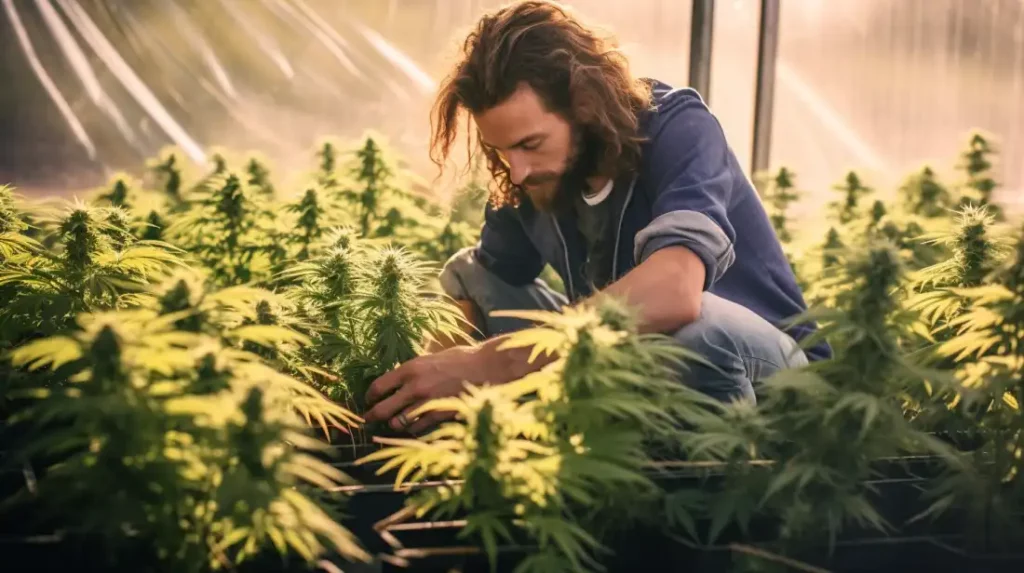
When determining the best light schedule for your autoflowering cannabis, it’s important to consider your specific growing conditions, your goals, and the characteristics of the strains you’re cultivating.
Factors to Consider When Choosing a Light Schedule
- Growing Environment: If you’re growing in a hot climate, you may need to limit light exposure during the hottest parts of the day to prevent heat stress. In contrast, in cooler climates, longer light periods may help maintain warmth and promote faster growth.
- Strain Characteristics: Some autoflower strains are more light-sensitive than others. For example, sativa-dominant strains may benefit from longer light periods, while indica-dominant strains might prefer some darkness.
- Energy Costs: If you’re looking to reduce energy consumption, a light cycle with a dark period (such as 18/6) will be more cost-effective than running lights 24/7. Balancing growth potential with energy efficiency is key.
- Growing Experience: Beginners might find it easier to manage an 18/6 light cycle, which provides a good balance of growth and ease of care. More experienced growers might experiment with different schedules to see what works best for their specific strains and setup.
Experiment and Adjust
The optimal light schedule can vary depending on the specific conditions of your grow space. Don’t be afraid to experiment with different light cycles to find what works best for your plants. Starting with an 18/6 cycle and adjusting based on the plant’s response is a good strategy.
Final Strain Highlights from Blimburn Seeds
- Purple Punch Auto: This strain is famous for its vibrant purple hues and sweet, grape-like flavors. It thrives under an 18/6 schedule, producing large, resinous buds.
- Tangie Auto: A sativa-dominant strain with strong citrus flavors, Tangie Auto performs exceptionally well under extended light periods, offering uplifting and energetic effects.
Optimizing Light Cycles for Maximum Yield
Autoflowering cannabis strains offer a unique and flexible approach to cultivation, but maximizing their potential requires a thoughtful approach to light cycles. While these plants are genetically programmed to flower regardless of light exposure, the amount and quality of light they receive will have a profound impact on their growth, yield, and potency.
- 24/0 Light Cycle: Ideal for rapid growth but may cause stress if not managed properly.
- 18/6 Light Cycle: The most balanced and popular option, providing robust growth and energy efficiency.
- 12/12 Light Cycle: A necessary compromise in mixed gardens, but not ideal for maximizing yield in autoflowers.
By knowing the strengths and weaknesses of each light cycle, you can adjust your approach to fit your specific growing conditions and the strains you’re cultivating. Whether you’re growing for personal use or aiming for top-tier yields, mastering the light cycle is an essential step to becoming a successful cannabis cultivator.
Remember, each strain has its own unique characteristics, and experimenting with different light cycles can help you unlock the full potential of your autoflowers. With the insights provided in this guide, you’re well-equipped to optimize your grow operation and enjoy bountiful, high-quality harvests.
FAQs
What is the best light cycle for autoflowering cannabis strains?
The most popular light cycle for autoflowers is 18/6, which provides 18 hours of light and 6 hours of darkness. This schedule balances growth and plant health, promoting robust development while saving on energy costs. Some growers also use a 24/0 light cycle for faster growth, but it can increase stress and electricity consumption.
Do I need to change the light cycle for autoflowers to start flowering?
No, autoflowering strains do not require a change in the light cycle to begin flowering. They are genetically programmed to flower based on age rather than light exposure. However, maintaining a consistent light cycle, such as 18/6, helps optimize their health and yield.
Can autoflowers grow under a 12/12 light cycle?
Autoflowers can grow under a 12/12 light cycle, but this is not ideal for maximizing yield. While they will still flower, the reduced light exposure limits photosynthesis and overall bud production. A 12/12 schedule is usually only used in mixed gardens with photoperiod strains.

